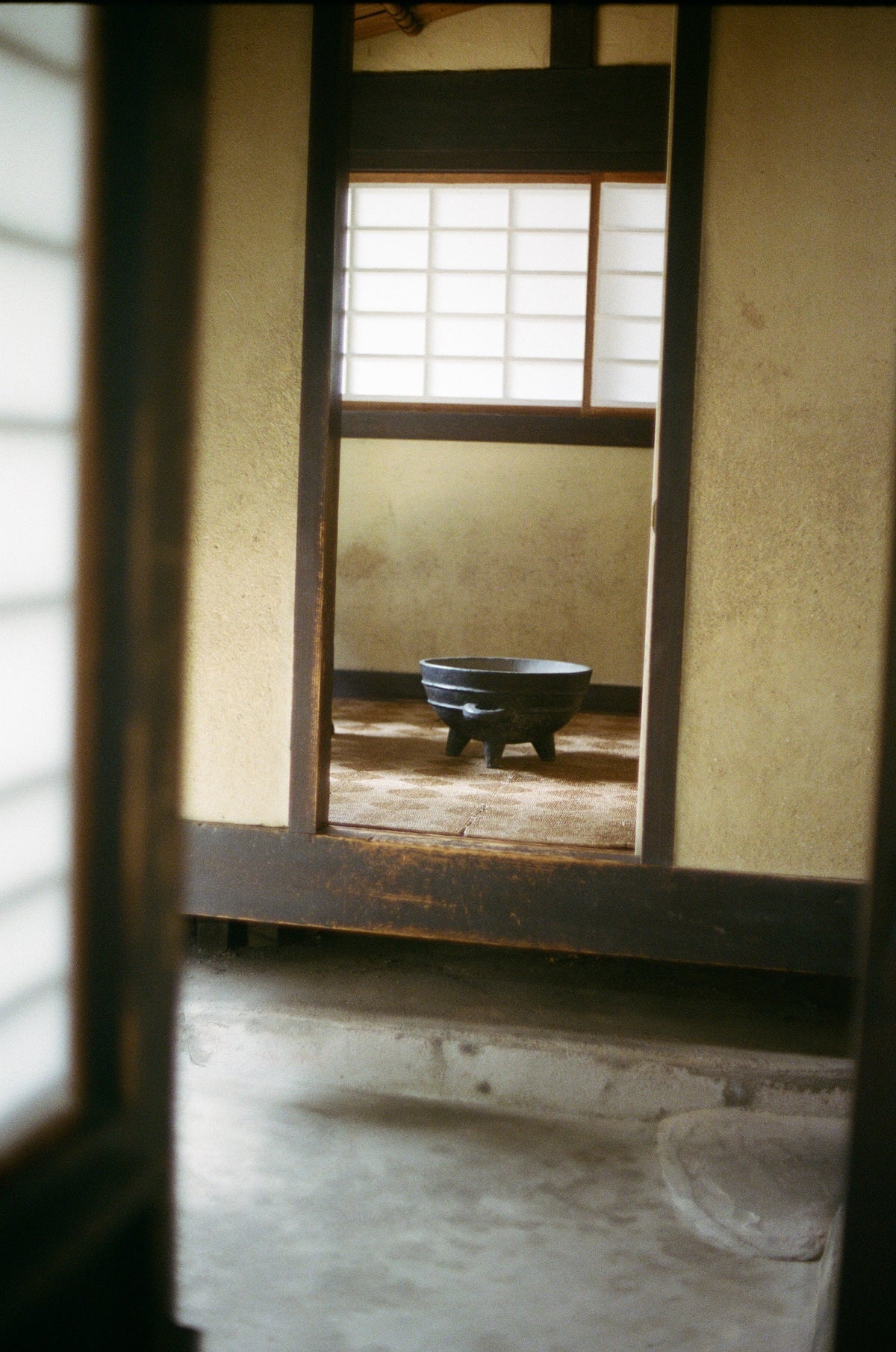- Regular Price
- $19.99
- Sale Price
- $19.99
- Regular Price
- $19.99
- Unit Price
- per

Located in a quiet Kyoto neighborhood near Kiyomizu-dera stands the Kawai Kanjirō House—the late home and working space of potter, sculptor, and philosopher Kawai Kanjirō. Tucked down a narrow side street barely wide enough for a car to pass through, the traditional kyōmachiya (Kyoto-style townhouse) stands unassumingly and uniformly amidst its surroundings.
With narrow facades that could act as storefronts accessible from the street, Machiya were traditionally built as both a place of business and residence for their owners. These houses provided everything the owner needed to build a life and family in a time when Kyoto experienced increasing economic growth.
After entering through the sliding door, to the right sits a wooden sculpture of what appears to be a mother carrying a child. A few steps further, you're within the homes center, surrounded by wooden beams, shoji screens, and an open hearth.

There's a radical duality throughout the space, blending both modern design aesthetic with the home's traditional Japanese surroundings.
Unapologetically, a favorite part of the Kawai Kanjirō House was the presence of the resident cat, Eki. Unaffected by those around her, Eki-chan keeps watch over the premises, often walking along the rooftops and napping among the artwork. While standing alone on the second floor, Eki appeared through an open window and nestled atop an igusa grass cushion right in front of me, and I squealed silently so as not to disturb her.
Eki-chan's presence further proved that the home was in good hands, almost feeling as if Kanjirō himself had tasked her with ensuring its safekeeping.


Alongside prolific potters Shōji Hamada and Bernard Leach, Kawai Kanjirō was a key figure of the Mingei Folk Craft movement, which celebrated the 'unknown craftsman'. He once claimed that 'living is work and work is living,' a notion proven true by the house we're now walking through.
Visitors can wander freely around the two-floor house, outdoor courtyard, and kiln, experiencing it as it was once used. Every corner and surface was adorned by Kanjirō's work, alongside collected treasures from local craftspeople and artists abroad, offering a glimpse into his aesthetic sensibilities and philosophy.
He lived simply, left no signature on his work, and declined all official honors, including the designation of Living National Treasure.



His large climbing kiln, preserved in the courtyard, stands as a testament to his lifelong dedication to the art of pottery. Built on a slope with eight chambers to allow heat to rise efficiently, the kiln was shared among twenty families in the neighborhood. In 1971, five years after Kanjirō's passing, Kyoto banned the use of kilns within the city, and the fire at the Kawai Kanjirō House was extinguished forever.


Although Kyoto is steeped in tradition, the long-established cultural spheres can still feel inaccessible, as many restaurants, teahouses, and galleries remain private and are invitation-only. It's refreshing to know that places aiming to preserve tradition are opening their doors to foreign admirers, allowing them to experience Japan's intrinsic concepts of living firsthand.
Kawaii Kanjirō's House offers an old-world charm that is rarely found outside of museums or special tours, and is a space I will return to time and time again.
